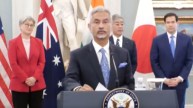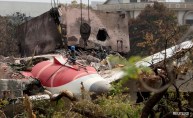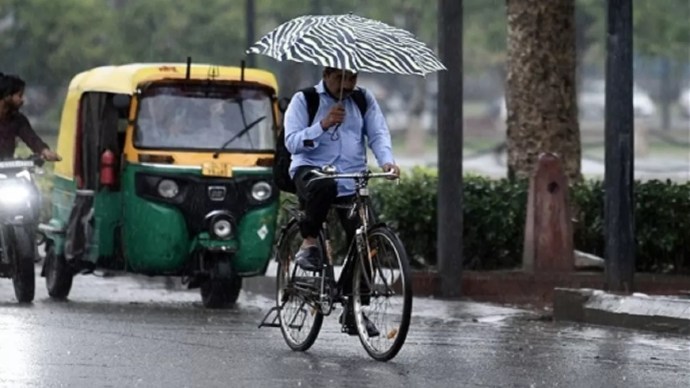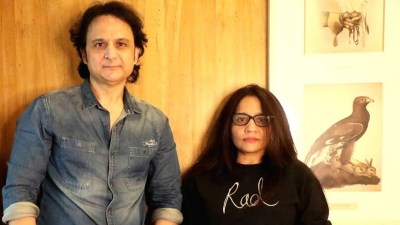Clashes broke out in Istanbul on Monday, where the police used rubber bullets and tear gas to break up a crowd. The unrest came after a satirical magazine was accused of publishing a cartoon of the Prophet Muhammad. Istanbul’s chief prosecutor ordered the arrest of 4 editors at LeMan magazine who are alleged to be behind this. The court said that the magazine had published a cartoon that “publicly insulted religious values”. One of the four individuals has been identified as cartoonist Dogan Pehlevan. The others have been identified as C.O a graphic designer, Z.A., the Editor-in-Chief of the magazine, and A. Y., the institutional director of the magazine.
Alleged Cartoon Depiction
The alleged cartoon, which Turkey says was “publicly insulting religious values,” contains a drawing that shows two bearded and winged figures. They are seen shaking hands in the clouds as missiles rained down below. This was mostly viewed as a message supporting peace between religions, especially compared to the violence happening on Earth. But government leaders and religious conservatives strongly criticised it.
What LeMan Editor Says
According to ‘The Guardian’ publication, the magazine’s editor-in-chief, Tuncay Akgun, said the image had been misinterpreted. “This cartoon is not a caricature of Prophet Muhammad in any way,” he told Agence France-Presse. “In this work, the name of a Muslim who was killed in the bombardments of Israel is fictionalised as Muhammad. More than 200 million people in the Islamic world are named Muhammad.
“[It] has nothing to do with Prophet Muhammad. We would never take such a risk.”
As the news broke, several angry protesters attacked a bar often frequented by LeMan staffers in downtown Istanbul. This provoked angry scuffles with police, an AFP correspondent said. Soon the scuffle developed into clashes involving between 250 to 300 people.
Turkish Government Reaction
In a post on X, Turkish Interior Minister Ali Yerlikaya confirmed the arrests. He shared the videos of the four journalists being arrested. In one of the videos, the cartoonist Doğan Pehlevan can be seen being handcuffed and escorted up a staircase by police. “I once again curse those who try to sow discord by drawing caricatures of our Prophet Muhammad,” Yerlikaya wrote, adding “The person named D.P. who made this vile drawing has been caught and taken into custody…These shameless individuals will be held accountable before the law.”
The justice minister, Yilmaz Tunc, said an investigation had been opened on grounds of “publicly insulting religious values”. “Disrespect towards our beliefs is never acceptable,” he wrote on X. “No freedom grants the right to make the sacred values of a belief the subject of ugly humour. The caricature or any form of visual representation of our prophet not only harms our religious values but also damages societal peace.”
LeMan magazine posted a message on X defending the cartoon and its meaning. It said it was sorry that some people were offended, but believed the anger came from misunderstanding the cartoon. According to LeMan, Pehlevan’s drawing aimed to depict “the suffering of a Muslim man killed in Israeli attacks” and “to highlight the righteousness of the oppressed Muslim people, with no intention whatsoever of belittling religious values”. The magazine also said that it “reject the stigma imposed on us, as there is no depiction of our Prophet.”
Dünyada en çok konulan ve nüfus olarak en yüksek sayıda isim Muhammed, Mehmet, Mamadu ( hepsi peygamber efendimizin ismini yaşatmak için müslümanlar tarafından konulur. ) ismidir. Şu anda Muhammed ismi taşıyan 200 milyon kişi var.Burada karikatürün çizeri İsrail tarafından+
— LeMan (@lemandergisi) June 30, 2025
LeMan Magazine
LeMan, started in 1991, is well known for its political satire and has often angered conservatives. This became more serious after it showed support for France’s Charlie Hebdo magazine, which was attacked in 2015 by Islamist gunmen who killed 12 people because the magazine had published cartoons of the Prophet Muhammad.
Charlie Hebdo’s Prophet Depiction And The Controversies
The magazine had printed several cartoons showing the Prophet Muhammad. In 2011, it changed its name to “Sharia Hebdo” for one issue, and after that, its office was attacked with a firebomb. In 2012, it again printed cartoons of the prophet, including one that showed him without clothes. Following this, Charlie Hebdo became a target for many terror plots. The terrorist group Al Qaeda had put the magazine’s editor, Stephane Charbonnier, on its hit list. Then, on January 7, 2015, two brothers named Kouachi entered the magazine’s office and carried out a deadly attack. Two days later, they were both killed by the police after trying to take refuge in a printworks 20 miles outside Paris.












